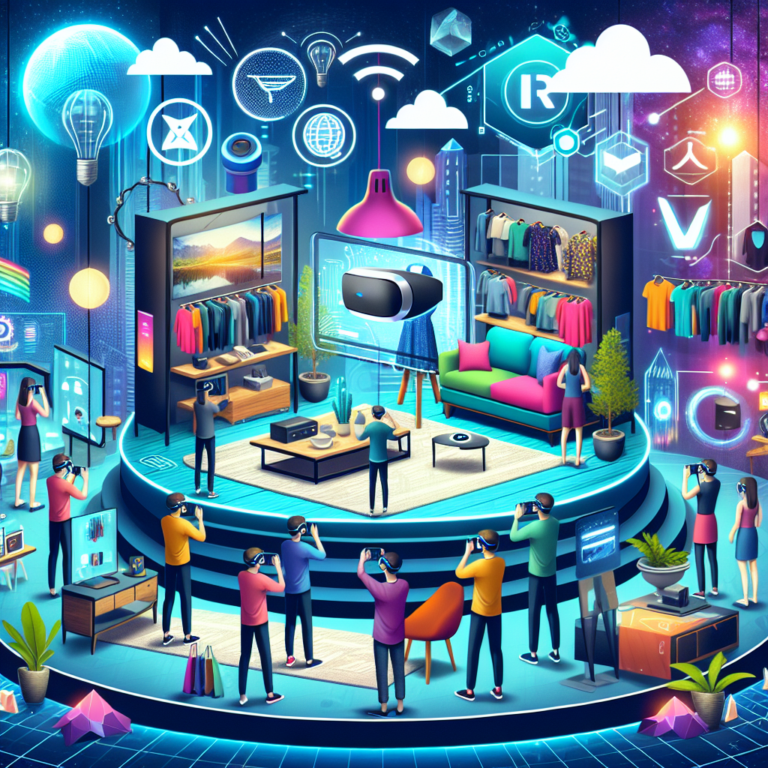Virtual Reality Engagement : A Dive into Virtual Reality Experiences for Businesses
Introduction: The Virtual Reality Revolution 🌎
Virtual Reality Engagement : In today’s fast-paced digital landscape, businesses are perpetually on the lookout for innovations that not only enhance customer experiences but also drive loyalty and engagement. One of the most groundbreaking technologies making waves is Virtual Reality (VR). Imagine stepping into a world where customers can explore products, immerse themselves in brand stories, and engage in interactive experiences—all from the comfort of their homes! This blog post delves into the exciting possibilities of using VR to create fully immersive customer experiences.
Why VR? Understanding the Value of Immersion 💡
Virtual reality isn’t just a tech gimmick; it represents a new frontier in customer interaction. The main advantages of using VR for business include:
- Enhanced Engagement: VR eliminates the barriers of traditional marketing, creating an interactive environment where customers can explore and connect with a brand.
- Realistic Visualization: Potential buyers can visualize products in a real-world context, diminishing hesitation and bolstering confidence in their purchasing decisions.
- Emotional Connection: VR can tap into customers’ emotions, allowing them to forge a deeper connection with brands through storytelling and immersive experiences.
Innovative Applications of VR in Business
1. Virtual Showrooms: A New Way to Shop 🏬
Virtual Reality Engagement : Imagine wandering through a virtual showroom where every product is displayed in stunning 3D. Customers can interact with items, rotate them for a closer view, and even see them in different settings. For instance:
- Furniture Retailers: Customers can visualize how a piece of furniture will look in their living room.
- Fashion Brands: Virtual try-ons can provide a realistic sense of how clothing fits and looks.
This immersive shopping experience eliminates uncertainty and enhances customer satisfaction.
2. Training and Customer Service Simulations
Using VR for training offers a safe environment for employees to hone their skills without the risks associated with real-life scenarios. It’s particularly beneficial for:
- Healthcare: Trainees can practice surgical procedures in a virtual operating room.
- Retail: Customer service scenarios allow staff to respond to a range of customer interactions, improving service quality.
Simulations also provide a unique opportunity for businesses to enhance their customer service approach by displaying how employees handle real-world challenges.
3. Immersive Brand Storytelling 📖
Brand storytelling is essential in creating emotional connections with customers. VR can take these narratives to unprecedented levels by immersing customers in a brand’s story. For example, travel companies might offer virtual tours of destinations, while eco-friendly brands might showcase sustainable practices in action. This allows customers to not only learn about the brand but to feel like they are part of its journey.
Barriers and Challenges to Implementation 🚧
Despite its potential, integrating VR into business strategy isn’t without its challenges. Here are some considerations:
- High Initial Costs: The development of high-quality VR experiences can be expensive, which might deter smaller businesses.
- Technological Limitations: Not all customers have access to VR headsets or the latest technology, which can limit the reach of VR campaigns.
- Content Development: Creating compelling, engaging VR experiences requires specialized skills and creativity.
While these challenges can pose obstacles, they are surmountable with strategic planning and investment.
Future Trends: Where is VR Heading? 🔮
As technology continues to evolve, so will the potential of VR in business. Here are some trends to watch:
1. Increased Accessibility
Expect advancements in technology to make VR more accessible to a broader audience. With the rise of smartphone-based VR and affordable headsets, customers will have more opportunities to engage with brands virtually.
2. Personalization through AI
Integrating AI into VR experiences will allow for personalized customer interactions. Imagine a VR shopping assistant that learns your preferences and curates experiences just for you!
3. Social Integration
As social media continues to play a crucial role in marketing, future VR experiences may include social features, allowing customers to share their experiences with friends, thus fostering community engagement.
Successful Case Studies: Brands Leading the Way 🌟
Several brands are already embracing VR technology to create immersive customer experiences:
- L’Oreal: Launched a virtual makeup app that allows customers to try on makeup before they purchase.
- IKEA: Created a VR app that lets customers design their own rooms and visualize furniture arrangements.
- Ford: Implemented VR in their design process, allowing engineers and designers to explore vehicle models in a virtual setting.
These case studies highlight how forward-thinking companies can leverage VR to not just enhance their offerings but also to create memorable and engaging experiences for their customers.
Final Thoughts: The Future is Here!
Virtual reality holds tremendous promise for businesses looking to elevate their customer experiences. By tapping into the power of immersion, brands can foster greater engagement, emotional connections, and customer loyalty. The question is not whether VR will become mainstream in business—it’s how soon we will begin to see its full potential unleashed. Get ready to step into a world of endless possibilities! 🌈




0 Comments